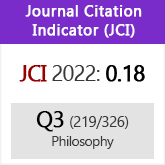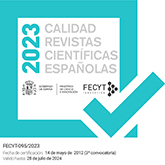«Common Property of the Earth», Human Rights and Global Justice
DOI:
https://doi.org/10.3989/isegoria.2010.i43.700Keywords:
Risse, Common Property, Global Justice, Membership, Human RightsAbstract
After comparing Risse’s conception of Common Property of the Earth (PCT) with other theories of global redistribution (Steiner, Pogge) or with conceptions of human rights in terms of membership (Cohen, Benhabib), we conclude that PCT as theory of distributive justice defends an unnecessarily low threshold; and as human rights conception doesn’t provide robustness in socioeconomic measures. Finally, the specification of human rights out of global membership cannot be translated into a «right not to be excluded from the new public property» (Sachar). This is so because the mere subsistence condition in human rights does not necessarily imply the condition of independence in the original status of co-owner. Therefore, this contingent derivation of human rights does not meet the transitivity required by its own justification requirements.
Downloads
Download data is not yet available.
Downloads
Published
2010-12-30
How to Cite
Álvarez, D. (2010). «Common Property of the Earth», Human Rights and Global Justice. Isegoría, (43), 387–405. https://doi.org/10.3989/isegoria.2010.i43.700
Issue
Section
Articles
License
Copyright (c) 2010 Consejo Superior de Investigaciones Científicas (CSIC)

This work is licensed under a Creative Commons Attribution 4.0 International License.
© CSIC. Manuscripts published in both the printed and online versions of this Journal are the property of Consejo Superior de Investigaciones Científicas, and quoting this source is a requirement for any partial or full reproduction.All contents of this electronic edition, except where otherwise noted, are distributed under a “Creative Commons Attribution 4.0 International” (CC BY 4.0) License. You may read here the basic information and the legal text of the license. The indication of the CC BY 4.0 License must be expressly stated in this way when necessary.
Self-archiving in repositories, personal webpages or similar, of any version other than the published by the Editor, is not allowed.














